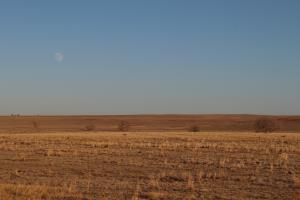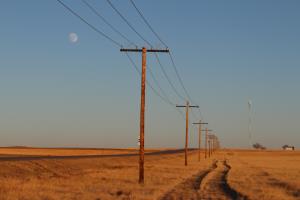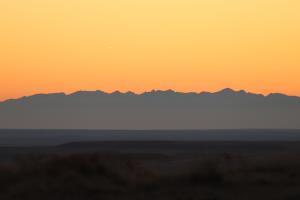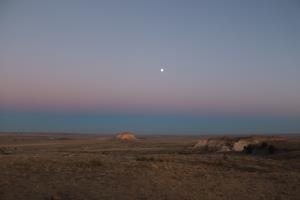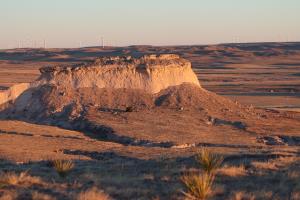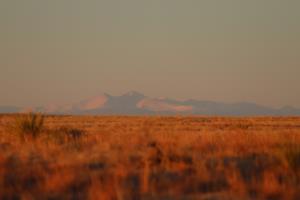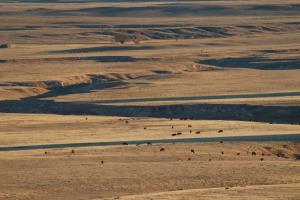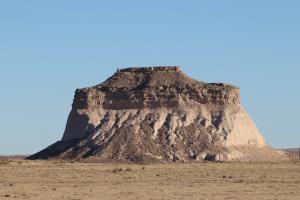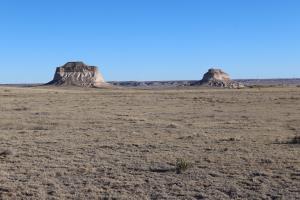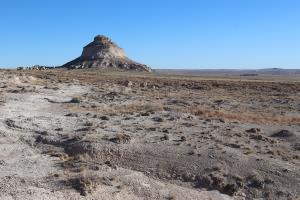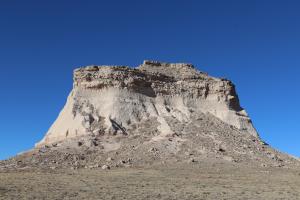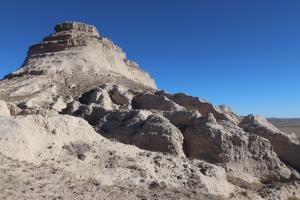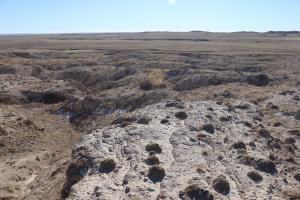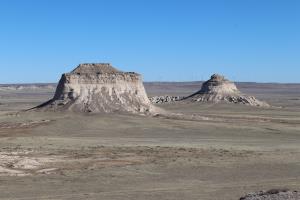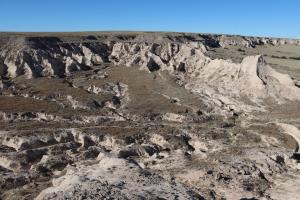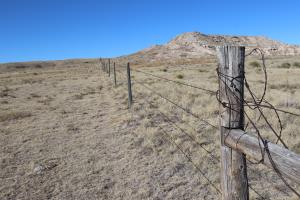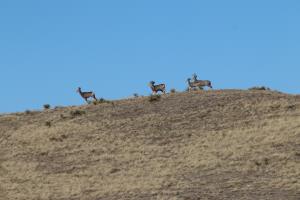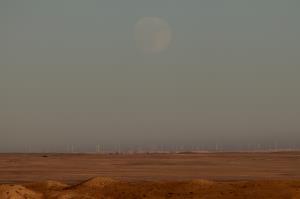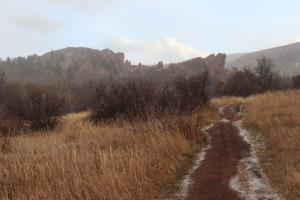Pawnee National Grassland: A Natural Treasure
Located in the northeastern corner of Colorado, Pawnee National Grassland is a breathtaking mosaic of rolling plains, striking buttes, and sweeping grasslands. It spans over 193,000 acres and stands as a testament to the vast, open landscapes that once dominated the Great Plains. This national treasure not only offers a unique ecological experience but also provides insights into the history and culture of the American West.
History and Background
The history of Pawnee National Grassland is deeply rooted in the heritage of the Great Plains. For centuries, the indigenous tribes like the Pawnee called these vast expanses home, hunting bison and engaging in agriculture. However, with westward expansion and the subsequent arrival of European settlers, the grasslands underwent significant changes. Intense farming during the 1920s and 1930s led to the Dust Bowl, a catastrophic environmental disaster.
In response to this, the U.S. government purchased damaged lands and introduced soil conservation techniques. The Pawnee National Grassland was officially designated in the 1960s, ensuring its protection and restoration.
Ecology and Wildlife
The grassland’s ecosystem is a sanctuary for flora and fauna. Its primary vegetation consists of shortgrass prairie species like buffalo grass and blue grama. Moreover, areas of the grassland, particularly near the buttes, are home to taller grass species and shrubs, making it a haven for a variety of wildlife.
Birdwatchers particularly treasure Pawnee National Grassland. It is a habitat for numerous bird species, including the lark bunting (Colorado's state bird), the mountain plover, and the burrowing owl. Additionally, the grassland supports mammals such as pronghorns, coyotes, and black-tailed prairie dogs.
Recreational Activities
Pawnee National Grassland is not just an ecological hotspot; it's also a recreational delight. The Pawnee Buttes, which rise some 300 feet from the plains, are a significant attraction for hikers. The Pawnee Buttes Trail offers a chance to get up close to these geological wonders.
Additionally, the vast open space provides ample opportunities for camping, horseback riding, and picnicking. The clear night skies also make the grassland a fantastic location for stargazing.
Conservation Efforts
Protecting and preserving the grassland is crucial, especially considering the historical degradation of the Great Plains. Grazing, while a traditional use, is now managed carefully to ensure the sustainability of the grasses. Regular controlled burns help rejuvenate the soil and promote healthy growth of native plants.
Moreover, in collaboration with local communities, organizations, and the Forest Service, initiatives are in place to educate visitors about the importance of these grasslands and the need for their conservation.
My Trip To Pawnee National Grassland
On Friday, November 27th, 2020, I embarked on a journey from Denver, Colorado, to the mesmerizing expanse of the Pawnee National Grassland.
Arrival and Campsite Insights
Reaching just around sunset, I settled at a dispersed camping site, which offered a panoramic view of the famed Pawnee Buttes. It's essential to note that dispersed camping offers no facilities. However, for those seeking basic amenities, the Pawnee Buttes Trailhead does provide vaulted toilets and covered picnic areas.
Hiking the Pawnee Buttes Trail
My Saturday began early, even before the first light of dawn. I commenced my hike at 9AM, a journey that spanned roughly 3 hours, inclusive of breaks for meals and photography.
A key observation was that while the first butte is accessible being on public land, the second stands on private property.
The trail is relatively flat, making for an easy trek, barring the route around the further butte, which challenges with its steepness and narrowness. For an optimal experience, I'd recommend treating the trail as a loop, where one scales the steeper section while returning. The majesty of the buttes is undeniable, rising approximately 300 feet above the vast grasslands.
Camping Experience and Departure
My stay extended over Friday and Saturday nights. Sunday saw me departing after witnessing a serene sunrise, choosing a time when the winds were milder.
Seasonal Considerations
Prospective visitors should be aware that from March 1st to June 30th, significant parts of the trail are restricted due to bird nesting. Summer poses its risks with the presence of rattlesnakes and potential tornado threats.
Amenities and Costs
A noteworthy point is the absence of any fees for hiking or setting up camp in the dispersed areas. However, the winds are a formidable force here, reaching speeds of 15-30MPH. My Saturday night was particularly breezy, leading me to recommend using a car or SUV for sleeping to withstand these conditions. By mid-day on Saturday, I noted around eight cars, indicating fellow hikers or those keen on a picnic.
Environment and Terrain
The Pawnee Grasslands are marked by the presence of oil rigs and wind turbines.
A less pleasant observation was the remnants of spent shells, left behind by irresponsible gun owners just off the roadways. The elevation of the grasslands mirrors that of Denver, with certain spots standing slightly taller. I'd advise having a 4WD vehicle, considering parts of the dirt road require higher clearance, and potential challenges in rain or snow, which I fortunately didn't encounter.
Conclusion
Despite its remoteness, which can manifest in chilly, windy nights, especially in the Fall, the Pawnee National Grassland offers breathtaking sunrises over an unending landscape. For those wishing to absorb the essence of Colorado and the intersections of Wyoming and Nebraska, this locale is an unmissable destination.
FAQ: Exploring Pawnee National Grasslands
Is Pawnee National Grasslands worth visiting?
Absolutely! Pawnee National Grasslands is a unique and beautiful destination that offers a variety of outdoor activities and stunning landscapes. It's a perfect spot for nature enthusiasts, birdwatchers, photographers, and anyone looking to experience the natural beauty of the prairie ecosystem. The grasslands feature wide open spaces, diverse wildlife, and opportunities for hiking, birding, wildlife watching, and photography.
Can you shoot anywhere at Pawnee National Grasslands?
No, you cannot shoot anywhere at Pawnee National Grasslands. Shooting is only allowed in designated shooting areas, such as the Baker Draw Designated Shooting Area. It's essential to follow the rules and regulations set by the U.S. Forest Service to ensure safety and protect the environment. Always check for the most up-to-date information on shooting regulations before visiting.
What animals live in the Pawnee National Grassland?
Pawnee National Grassland is home to a variety of wildlife species adapted to the prairie environment. Some of the animals you might encounter include pronghorn antelope, deer, coyotes, foxes, badgers, rabbits, prairie dogs, various species of birds such as hawks, eagles, owls, and a wide range of smaller bird species. It's also a habitat for reptiles, insects, and other critters that thrive in the grassland ecosystem.
How big is the Pawnee National Grasslands?
Pawnee National Grasslands cover approximately 193,060 acres in northeastern Colorado, making it a substantial expanse of prairie landscape to explore. The grasslands are managed by the U.S. Forest Service and are open to the public for a variety of recreational activities. The area's size offers ample opportunities for hiking, birdwatching, photography, and experiencing the tranquility of the prairie environment.
Before you visit Pawnee National Grasslands, it's a good idea to check for any updates on regulations, trail conditions, and visitor information to ensure you have a safe and enjoyable experience.
No Comments
